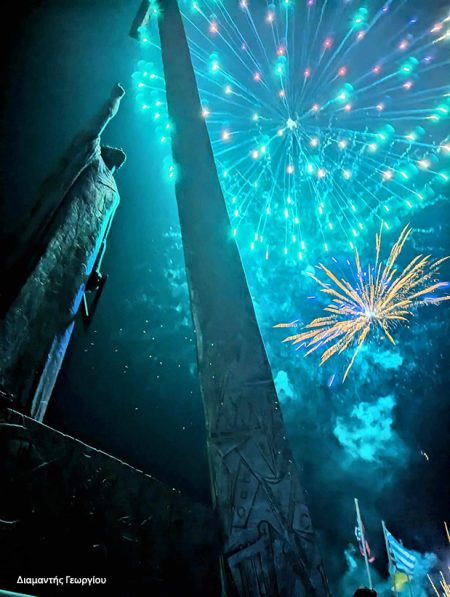Vineyard
The viticultural tradition of Samos has roots in antiquity, when prominent figures of medicine and philosophy, such as Hippocrates, Galen, and Theophrastus, referred to Samian wine in their works. Historical sources also mention the ship Kyrenia, which transported Samian wine to various ports of the Mediterranean.
Samian wine holds one of the oldest Protected Designation of Origin (PDO) certifications and is entitled to circulate internationally under the name Samos. The renowned Muscat of Samos is entirely identified with its geographical origin, in the same way as the finest wine varieties worldwide.
Around 25 villages on the island are systematically engaged in viticulture, mainly at high altitudes on the mountainous slopes around Mount Ampelos. There, the vineyards are arranged on traditional dry-stone terraces with steep gradients, making cultivation demanding but of exceptional quality.
The main variety grown on Samos is Muscat, while smaller areas also cultivate the Fokiano and Flerítino varieties. The island’s vineyards cover a total of 9,256 stremmas (about 926 hectares), of which 5,418 belong to the Municipality of Western Samos and 3,838 to the Municipality of Eastern Samos.
Muscat of Samos is exported to many countries, including France, Canada, the United States, the United Kingdom, Belgium, Germany, Switzerland, Italy, the Netherlands, Sweden, Cyprus, Australia, Denmark, the Czech Republic, Finland, China, Hungary, Romania, and others.
Across the Municipality of Eastern Samos, the local wineries not only fill our glasses with the “nectar of the gods” but also enrich our travel experience, bridging flavours and cultures through a unique journey into the Samian terroir du vin. In an authentic and distinctive way, these wineries become ambassadors of tradition and culture, highlighting our land with a sweet toast… “stin egia sas!”
Wine Museum of the Union
of Winemaking Cooperatives
of Samos (EOSS)
The centuries-old history of viticulture on Samos, and all the elements that make its wines unique, can be “tasted” with a visit to the Wine Museum.
The emblematic Wine Museum of EOSS is housed in a beautiful 19th-century stone building, which before the founding of the Union (1934) functioned first as a wine warehouse and later as a cooperage.
Its redesigned layout, based on a modern museological study, aims to immerse visitors in the traditional cultivation of Muscat. It also reveals the tireless efforts of generations of Samian growers who created the unique vineyard of Samos, stretching up to the highest peaks of the island on ancestral dry-stone terraces.
The long historical, social, and cultural journey of Samian wine is narrated through artefacts and exhibits in an engaging tour across the museum’s rooms, each enhanced with QR codes for a visual experience.
Highlights include: a natural representation of the cultivation of the “white, small-berried Muscat of Samos” on terraces, a traditional hut and wine press, presses and tools from the last century, rare photographs, very old bottles, handwritten production logs, cooperage tools and vessels, antique winemaking machinery, and huge wooden wine vats from the last century, with a capacity of up to 80 tonnes. Also displayed are the most important of the hundreds of international awards and medals granted to the wines of the Samian Cooperative.
The Wine Museum of EOSS bears the Special Visiting Site Sign from the General Secretariat for Tourism Policy and Development, as it fulfils all requirements of a museum space.
ΜΕΤΑΧΑ LIKNON
METAXA LIKNON is the “Home” of the House of Metaxa on the island of Samos. Nestled within an organic vineyard of Muscat grapes on the slopes of Mount Ampelos, LIKNON offers visitors a unique experience of Greek hospitality, centred on the creation of the Original Greek Spirit, the terroir of Samos, and the vision of the House of Metaxa for a more sustainable future.
During the guided tour, visitors taste selected METAXA products such as METAXA 5 Stars Greek Orange, METAXA 12 Stars, and the Private Reserve METAXA Orama, enjoying an experience for all the senses. At the Guest House, they can try signature cocktails and purchase METAXA products and souvenirs.
The experience also introduces visitors to the House of Metaxa’s collaboration with the Hellenic Ornithological Society, a project aimed at strengthening the island’s biodiversity through the monitoring and protection of birds.
A visit to METAXA LIKNON in Vourliotes can be combined with the walking route “Muscat Vineyard Trails”, which passes through areas of natural beauty and cultural significance, as well as Muscat vineyards. The project was carried out by Paths of Greece with exclusive sponsorship from the House of Metaxa.
The refined spaces of METAXA LIKNON can also host small private events of high quality.
Chatzigiannou Estate
Themistocles and Evangelos. It began operating in 2019, immediately after the lifting of the compulsory cooperative.
Its main aim is the production of high-quality wines, with a focus on the white small-berried Muscat — the crown jewel of Samian varieties (Muscat of Samos). The privately owned vineyards, covering 55 stremmas (5.5 hectares), are cultivated with respect for the environment, following certified organic farming methods under the supervision of DIO (Greek certification body).
The wines have already travelled beyond Samos, reaching many regions of Greece and abroad. International awards — silver, gold, and grand gold titles — confirm the team’s dedication to showcasing the potential of the Samian vineyard and the art of winemaking.
Their success rests on three core values:
- Good viticulture – respect and care for the land and the vine
- Good winemaking – knowledge, passion, and technical excellence
- Good living – quality of life, culture, and enjoyment through wine
Eleftheriou Winery
At the foothills of Mount Karvounis, in the beautiful mountain village of Stavrinides, the Eleftheriou Winery looks amphitheatrically over the Aegean. It represents a harmonious blend of tradition and functionality.
The love for vineyards, combined with the passion and dedication of Evangelia Vellani and Petros Eleftheriou, who continued his family’s tradition, led to the founding of the winery in 2017 on a 200 m² site. This fulfilled the dream of his grandfather Nikolaos, opening a new era for the Stavrinides area and local winemaking.
The winery includes a vinification space, a bottling area, and a beautifully arranged tasting room overlooking the vineyards. The steep slopes of the land require manual cultivation of Muscat and Cabernet–Syrah–Merlot varieties, while bottling is carried out in a natural, traditional way.
The Eleftheriou wines meet high-quality standards and include sweet Muscat, dry Muscat, and red wine.
Contact: 6932320353
Olive
The olive groves of Samos extend across 56,816.2 stremmas (5,682 hectares) with 810,973 trees in the Municipality of Eastern Samos, and 43,319.3 stremmas (4,331 hectares) with 546,160 trees in the Municipality of Western Samos. Samian olive oil carries the Protected Geographical Indication (PGI Samos), which guarantees its quality and authenticity.
It is produced mainly from the local Throumbolia variety (at least 90%), and to a lesser extent from the Koroneiki variety (up to 10%). The PGI “Samos” designation was recognised in 1993, according to EU Regulation 510/06, and applies exclusively to virgin olive oil produced from these two varieties.
The Municipality of Eastern Samos is planning actions to promote olive tourism, such as creating “olive parks”, turning old olive mills into museums, and developing visitable units. This is a form of cultural tourism aimed at offering experiential insight into the history of the olive and the evolution of olive production on the island from antiquity to the present.
A special place in the island’s olive tradition belongs to the oldest olive tree of Samos, located in the village of Myloi. The ancient olive of Myloi, known as Eva, is 2,500 years old and still produces olives from a living shoot seven metres high. Today, Eva preserves only the outer part of its trunk, 15–20 cm thick, with a circumference of 12.5 metres and a diameter of about four metres.


